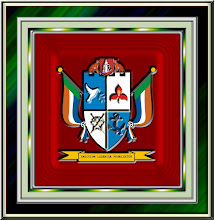Cape Town’s “White” Squatter Camp
Under the Apartheid regime of racial segregation the neighborhood was part of a public housing project for the ‘poor Whites’. Now, Ronald points out, many former residents were forced to leave their homes. The housing company Communicare privatized what he deemed to belong to the poor. The ‘rich people’ moved in and bought their houses. The new and more affluent residents, I learned, are Coloureds, people who were denied access to housing in the suburb under Apartheid. The young men seemed to be concerned about the new racialized hierarchy in which some White residents have moved to the lowest position of the social ladder in the neighborhood. ‘I will take you to a White squatter camp’ he made clear. His aunt asserted that she had an uncle in the informal settlement who would be willing to talk to me. ‘He’s White but he looks like a Coloured,’ she smiled.
The racial categories in which people were put under Apartheid are still widely used. They are nevertheless confusing. The family who lives in lightwood sheds in a backyard seems to be hardly concerned with the skincolor of their new and more affluent neighbors. But who is Coloured and who is White? ‘We and the Coloureds are basically one!’ Ronald emphasized once after having drunk several glasses of Brandy. In deed, he did not frame the gentrification of his neighborhood in racial terms. He said it was ‘poor’ peoples’ housing and not ‘white’ peoples’ housing. Class differentiation took precedence over racial differentiation. Ronald and his family does not fit the stereotype of the racist ‘poor white’.
On Tuesday evening Ronald kept his promise and took me to what he then sarcastically called ‘Grand West Estate’. In fact, the squatter camp is positioned awkwardly between the large wall of a new private housing complex and a fence that demarcates the Grant West Casino, one of the cities hubs of entertainment. I stopped the car at some distance from the sheds that were illuminated by the flickering of a fire. When Ronald indicated that he didn’t know any residents, I was surprised. It felt inappropriate to approach the people. I decided to come back with his aunt. Soon, however, it became clear that she didn’t want to introduce me to the relative whom she had pointed out as a squatter before. For years they have not been in contact. I was puzzled. Then I was told I could go there alone anytime since ‘They are good people.’
I was reluctant to approach one of the 15 and something sheds when I went to informal settlement on my own in bright daylight. I was told that the poor Whites living there were already on a national TV show. How would the people think about strangers who come to make them (in)famous. Obviously people lived in poverty. I noticed that there is no electricity and no running water. The municipality seemed to have erected three blue toilet boxes. I mingle with the spectators who have gathered around a police car. A young man is accused of having beaten a woman. One of the residents introduced himself. When the police left he started to tell me his life history without being asked for it: His wife died of AIDS, he lost his job, and could no longer pay for rent. ‘Here are pure whites,’ he looked at one of the blond children playing on the dusty ground. ‘We Coloureds are used to it but the Whites…’ he frowned.
I was unable to classify most of the people I saw in the informal settlement. They showed a wide array of phenotypic characterisitcs integrated through poverty.
For assistance to the people of Coronation Park please contact Melodie van Brakel of THE CRADLE OF HOPE on +2711-660-4623 or melodie@thecradleofhope.org
We assist mainly with the children and the elderly of this settlement as they are the ones that cannot fend for themselves and they are suffering the most. PLEASE help us to help these vulnerable people.
http://www.thecradleofhope.org
SEE ARTICLE















No comments:
Post a Comment